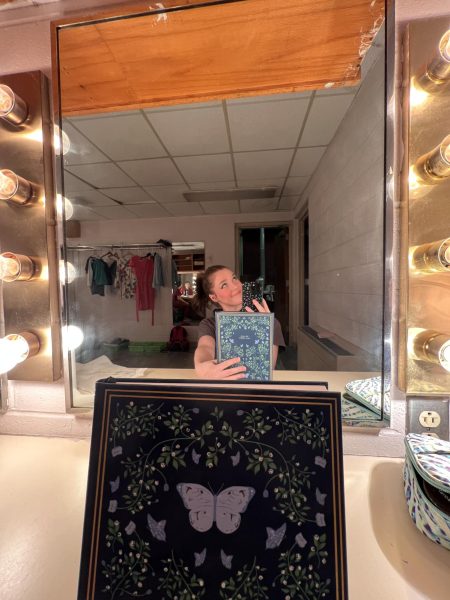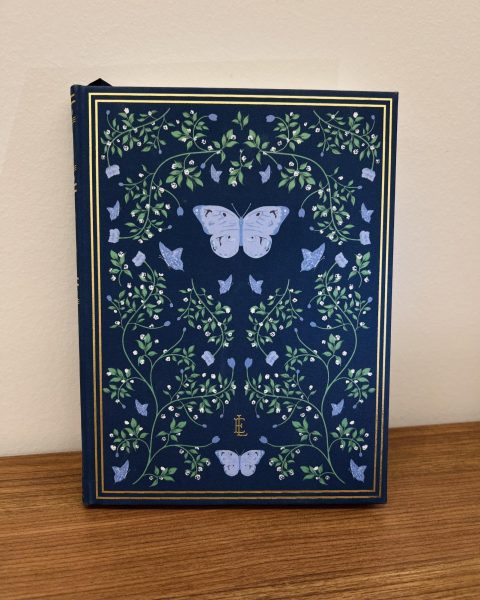The value of sports coverage
March 30, 2015
On a February 25post from The Collegian’s Facebook account, Gary Levine, a professor here at AU, commented, “The Collegian seems to be about 80 percent sports and bar reviews these days. Nothing else going on at AU?” The original post included a list of five stories that would be included in the upcoming issue, two of which were athlete profiles, and one of which was the bar review.
Levine commented before the full issue had been published, either in print or online. Based on the Facebook post, he could have expected 60 percent of the stories to focus on sports and bars. In reality, the paper featured its standard two sports pages and an entertainment page focused on reviewing a bar. The features page also included two profiles of athletes, one of which began on the first page. This puts sports and bar reviews slightly over 50 percent of the paper, still well short of the 80 percent Levine stated.
Excusing the factual inaccuracy of Levine’s comment, I think I can understand the sentiment of his comment. “Nothing else going on at AU?” he asks, likely implying there are more important things for The Collegian to cover. Hard news, things like the prioritization process, the presidential search and administrator salaries, deserve more attention than they receive, especially more attention than a basketball game.
Levine is right, of course. Hard news, by its definition, is the news readers “need to know,” where soft news is the news readers “want to know.” Finding the balance between these two competing elements is the natural and eternal dilemma within any newspaper’s newsroom. How can we, as a news outlet, write the stories people want to read, the stories about AU basketball, or feature stories about the AU students who participate in these games, while also delivering the news the Ashland University community needs to know? How can we balance that? I’d argue we do it well. The Collegian earned a 2nd place award in Division B, any college newspaper that prints less than three times per week, from the Ohio Newspaper Association in news coverage. I earned a first place award in in-depth reporting, and my predecessor Chris Bils earned a third place award in the same category. The Collegian constantly earns these awards due to its coverage of the things on campus that matter most.
Did February 25’s issue have a hard-hitting investigation splashed across its front page? No. Does that make that issue of the paper worse? I don’t think so. The Collegian has proven itself willing to tackle these difficult stories when they arise, when there is a story to be told. In this very issue, we are covering student morale, the changes to the rules and regulations that govern faculty and the search for the university’s new president.
These are important stories for all, but they are only interesting stories for some members of the AU community. I won’t make the case that sports are important to everyone on campus, or even interesting to everyone, but the fact is more people will pick up a newspaper for sports coverage than for hard news. USA Today, an iconic national newspaper, sees 38 million unique visitors to its website each month, while its sports media group reaches more than 50 million per month. It is not something I am necessarily excited about, but it is a reality we must operate within, especially on a college campus where one-third of the students are NCAA athletes themselves. The Collegian serves the entire campus community, not only faculty and staff. If anything, the demographics of the community should steer us to serve the students above any other group. With over 2,000 students on campus, they are far and away a larger group than any other.
This is treating all “sports” stories as the same, something that is simply untrue. There are two pages of sports coverage, focusing largely on the in-game action. What has prompted the recent spike “these days,” as Levine puts it, has been four great feature stories published in the previous two issues, three of which focused on three current athletes, while one looked at the experiences of an AU grad working in professional sports entertainment. A quick read of these stories reveals these stories are only tangentially related to athletics. These are stories about perseverance, about developing a relationship with God, stories of finding a career you can be passionate about, and dealing with the concerns that come from selecting a college.
In short, these are stories about being a college student, about being a human being. These stories describe the richness of life at Ashland University in a way no story about the university’s finances can. These are stories about the growth students can experience here, about the whole education they received here. Dismissing these stories misses what Ashland University is in a deep way. Focusing solely on hard news disregards the human experience that occurs in spite of the financial woes and the administrative transitions.
Dismissing these features as mere sports stories is inaccurate, but I will go a step further; there’s nothing wrong with covering sports in an in-depth way. The Collegian exists to serve the campus community, but it is as much, if not more so, an educational tool for AU’s Journalism and Digital Media students. Eli Saslow, a reporter for The Washington Post who won a Pulitzer Prize, newspaper journalism’s highest honor, in explanatory reporting, began his career as a sports writer. He credits his background in sports for preparing him to do the sort of serious work that earns Pulitzers.
“Sports writing is about the best way to learn how to do any kind of writing,” he said in a conversation with the Associated Press Sports Editors. “As a sports journalist, your whole job is to watch and then to write about what you see in a way that feels fresh, new, immediate. Also, you learn to write often and write fast, which is always useful, no matter what kind of work you want to do. And you get to write about something that at least feels high stakes, with tension and drama — and even if those elements are sometimes a little manufactured, those are the elements that are essential to any good story.”
Writing about sports prepares us as students to cover these hard stories. They give us experience writing high-stakes stories at the low-stakes table. The outcome of a regular season basketball game does not carry the same weight for the AU community as selecting a new president, but if you can’t handle the conflict and tension in a basketball game, you can’t handle it in a front-page hard news story.
Sports coverage matters. To dismiss sports coverage is to disregard the interest people have in sports. It disregards the truth-telling potential sports offers us as journalists, and it disregards the teaching ability offered by covering AU athletic events. That’s why The Collegian has covered sports, does cover sports, and will cover sports, seriously.









